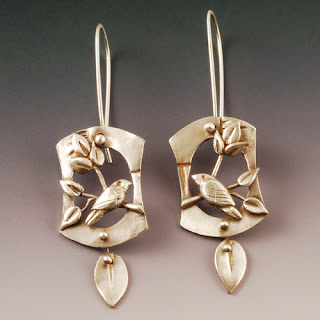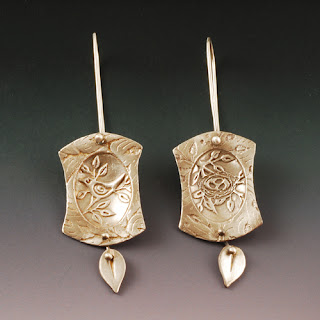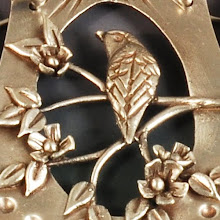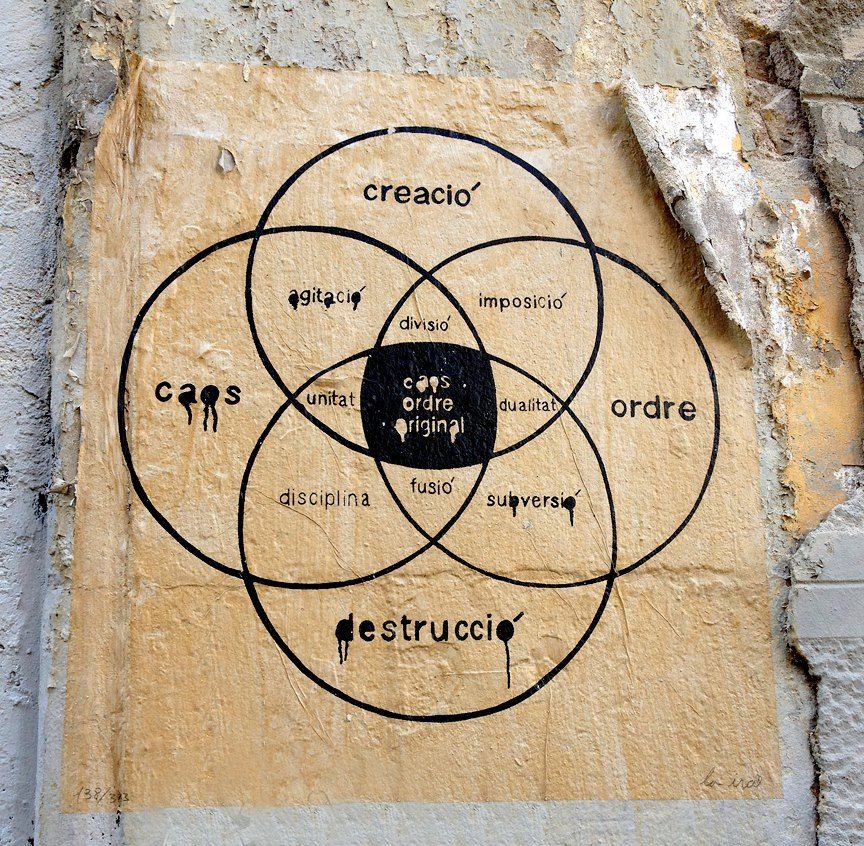So you're wondering how to get from simple, beginning, generic designs to your own recognizable artistic style? The idea is to develop a personal vocabulary of shapes, motifs, and components that can be combined in a multitude of original ways. One idea builds on another, with only slight variations from one to the next, but over time persistent evolution refines the design.
 |
Warbler earrings
©2012 Vickie Hallmark
sterling silver |
One starting point is the idea book or board. For years now, I've maintained a
Book of Attractions, filled with images cut from magazines of work that speaks to me -- ceramics, fiber, wood, stone, metal & glass all appear. Of course, everyone is doing their own collections on
Pinterest, and I'm no exception. The one thing I recommend in terms of really utilizing the boards (or old-fashioned book) to advance your own work is to
analyze what about the piece attracts you. Which shapes repeat? What colors captivate? Finding the themes of the work that your soul is drawn to can help you make work that is true to your own self. This is not a license to copy, but a hint of where to start to develop your own personal style.
 |
Bird & Nest Shield earrings
©2012 Vickie Hallmark
sterling silver |
For example shields have recurred in my clippings or pinnings for many years, so I know I should use shield shapes in my own work. Coupled with my favorite bird and nest motif, using custom textures made from my original drawings, these earrings are the simplest version of my self.
 |
Flock earrings
©2012 Vickie Hallmark
sterling silver |
The squeezed pillow shape from my
Flock and
Birdwatching bracelets is also one of my favorites, so I have used it repeatedly. Variations abound. I can cut a plain tile with my texture, as in the original Flock bracelet. I can cut an opening and build my trademark sculptural bird on a branch across it. A box behind a window can hold a painted tile of glass. I can split the shape into two or more pieces, with a window that is flat and an oval or other shape that is domed, convex or concave. A box bead, or two domed tiles attached at the corners for a truer pillow shape would give even more dimension. Once I get going with the variation brainstorming, ideas really start popping. I can change the color by using patina or resin or gold keum boo. I can add extra components that reflect the rest of the work, like leaf dangles.
The best way to evolve the work is to make more. Slow but steady variation leads to new ideas and personal work. Develop a list of shapes, textures, colors, marks and components that can be used to generate never-ending variations on a simple theme.

























